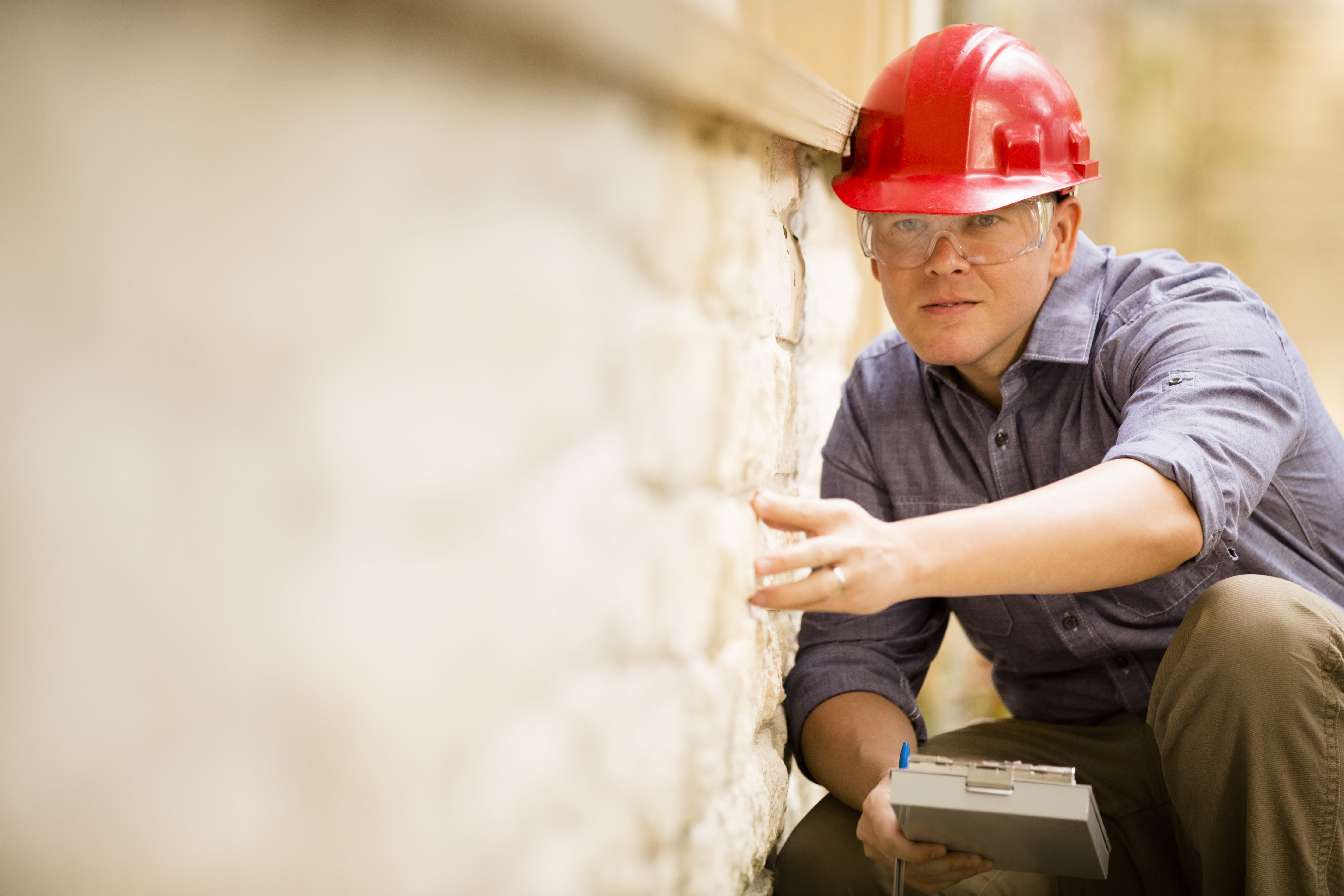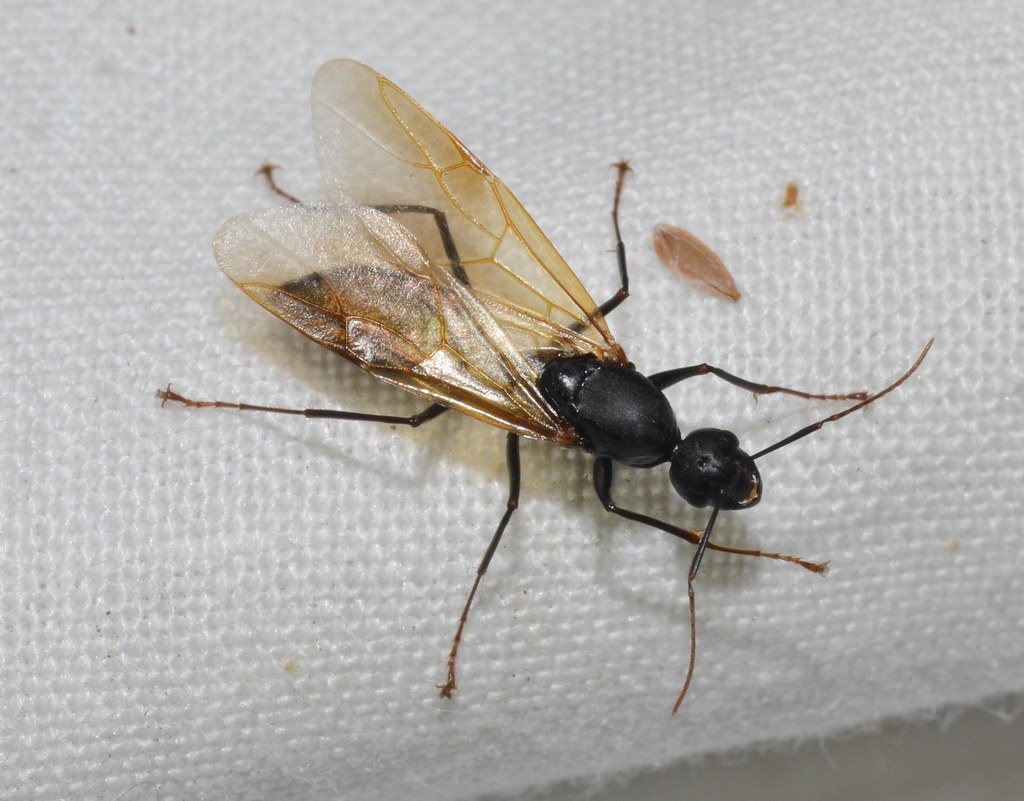Termite Identification: Signs and Types of Termites
Termites work 24/7/365 to consume and damage the wood supports, flooring, doors, cabinets and wood siding of both homes and commercial structures. Even though termites are known as “silent destroyers” there are several visible signs you may notice that indicate a termite infestation. A professional will be able to identify what type of termite species you are dealing with based on the type of damage, and give a proper diagnosis of the problem.
Signs of a Termite Infestation
Active termite infestations can be difficult to detect. Although termite activity peaks in the spring and summer, they are active all year round. All they need to survive is moisture, wood and warmth.
The first sign that termites are near your home or business are active, visible swarms that occur in early spring. These flying termite swarmers can be seen hovering near windows and doors and leave behind discarded wings. Swarming season indicates the growth of the termite colony, and that they are looking for a new nesting location. If you see swarmers, contact a pest professional and save yourself the headache later on.
You may also find damage in your home or business that could point to a potential termite presence:
- Floor damage – Flooring may blister or snag in areas. Checking underneath the flooring will help you determine if the changes are due to termite activity. Your floor may also feel spongier and spring more than usual.
- Wall damage – Check for cracks in your internal walls for signs of termites.
- Ceiling damage – Cracks on ceilings and cornices may house termites.
- Foundation damage – Although termites do not eat concrete, they are able to squeeze through cracks to gain access to wooden floor joints, so watch for activity near cracks and crevices.
- Sticking windows/doors – Doors and windows may become difficult to open as termite activity can cause frames to be misshapen.
- Outdoor wood damage – Decking and wooden fence posts are at great risk for termites. You may see the wood begin to decay or it may sound hollow when tapped.
- Damaged roof tiles – Excess moisture in your home due to loose, broken or damp roof tiles may attract termites and allow them further inside your home.
- Weakened/hollow sounding wood – Termites will feed underneath the surface of the wood, making them nearly invisible. As they eat through the wood they create hollow areas within the wood letting the damage go unseen. Wooden doors, furniture and structural support are all at risk.
- Termite swarms – Swarms of termites may be seen around stumps, firewood, mulch, or similar locations. If you see a swarm exiting your foundation, walls, porches, etc., it’s time for a termite inspection.
- Other signs of termite damage – Termites are also known to cause damage to insulation, plaster, books, and swimming pool liners. Watch for subtle changes to the material in and around your home and yard.
- Mud tubes – Subterranean termites build tunnels, known as mud tubes. These tubes are made of soil, wood and debris and connect termite nests to food sources. You won’t be able to see the tunnels underground, but termite will build them up a structure to gain access. They can be found on the exterior of your home, on interior walls, beams in crawl spaces, and on any other flat surface. These mud tubes indicate an already active termite colony.
- Droppings – Small piles of fecal matter can be found near infested wood, and are generally the color of the wood they are feeding on.
Because termites nest within the structure of buildings, they can easily go undetected for years and lead to significant problems that could have been avoidable.
Types of Termites found in Houston
Different species of termites can be identified through different forms of structural damage. Here’s more about the three most common termite species in Houston.
Subterranean
Subterranean termites are found throughout Texas where moist soil is present. However, the presence of termites is often not readily noticed because their activity is hidden behind wallboards, siding, decking or wood trim. These termites are attracted to certain odors of wood-decaying fungi that make the wood more palatable and easier to penetrate.
Natural resources for subterranean termites include dead trees and brush. When this natural vegetation is cleared and new construction takes place, termites often switch to feeding on wooden structures.
Subterranean termites enter through structures that are in direct contact with the soil and by building shelter tubes over or through cracks in foundations. Any cellulose material in direct contact with the soil, such as trees, vines or plumbing fixtures, can serve as an avenue of infestation.
Formosan
Formosan termites are a subspecies of subterranean termites and feed on cellulose materials. Because of their larger colony size, they attack a wide range of wood at a faster rate than native subterranean termites and have the capacity to exceed 1 million in colony size.
Unlike other subterranean termites, Formosan termites regularly construct above ground nests within the structures that they infest. The possibility of both a subterranean nest close to the infested structure and an aerial nest within the structure can greatly increase the damage of these termites.
Signs of Formosan termites includes aerial nests made up of chewed wood. These nests can be as large as several cubic feet and found in both the soil and above ground. They can only be found when wall coverings are removed and can be difficult to find. All subterranean termites, including Formosan, build mud tunnels to bridge their nests to food. Presence of these tunnels near the foundation of your home are a sure sign of an infestation.
Drywood
Unlike its subterranean brethren, the drywood termite lives above ground, finding all the moisture they need in the wood of a building or structure. Drywood termites will swarm in dozens and even hundreds around building exteriors to find a suitable spot.
Ideal spots for drywood termites are joints and crevices around doors, windows frames, eaves, attics, molding, wood siding, and where shingles and paper overhang wood. Once they find a location that suits them, these termites can re-infest the exact same place unless steps are made to prevent them.
Signs of drywood termites are the presence of winged termites swarming from small openings in the surface of wood. Drywood termites lose their wings quickly after swarming, but the wings are important for proper identification. Colonies indoors are almost certainly located within the actual timber structures of the home or building, however it is possible for them to invade wooden furniture. Drywood termite damage can appear as water damage, and include sagging ceilings, floors and walls.
Ready to Get Started? Protect Your Home from Termite Damage
An experienced pest technician can not only identify what type of termite problem you are dealing with, but also come up with a proper diagnosis and plan for treatment. Even if you haven’t experienced signs of termites, the best method of control is prevention.
Contact Holder’s today for termite inspection, prevention and treatment.
Related Post From Our Blog
Are They Termites or Carpenter Ants?
Termites and carpenter ants are no joke, causing severe damage to your home. Both are small and well hidden, meaning they can go unnoticed for quite some time. These wood-destroying insects have some key differences, [...]
When Do Termites Swarm in Houston?
What Is A Swarmer? Bet you didn’t know there were types of termites in this world that don’t eat wood, huh? Well, there are, and we’re here to introduce you to the swarmer. Swarmers, also [...]
What Attracts Termites to Your Home
Understanding what attracts termites to your home is the number one step in preventing them. Once you have a termite problem, it becomes increasingly difficult to stop the infestation in its tracks. Your home might [...]
Termite Identification Serving
Houston



